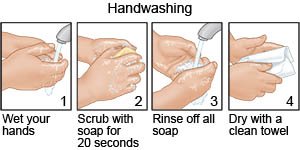External Fixation of an Ankle Fracture
Medically reviewed by Drugs.com. Last updated on Apr 6, 2025.
External fixation of an ankle fracture is surgery to repair your broken ankle. Fixation means the bones will be held in the correct position with medical hardware, such as pins and screws.
 |
DISCHARGE INSTRUCTIONS:
Seek care immediately if:
- You have increased pain or swelling in your ankle that does not go away.
- Your leg, ankle, or foot is swollen and feels tight.
- Your skin or toes turn blue or white, or they feel cold, numb, or tingly.
Call your doctor or surgeon if:
- You have a fever of 100.4°F (38ºC) or higher.
- You have chills, a cough, or feel weak and achy.
- You have pain and warmth at the pin sites.
- Your pin sites have more redness and drainage than usual.
- The frame or pins are loose or move more than usual.
- Your skin is itchy, swollen, or has a rash.
- You have questions or concerns about your condition or care.
Medicines:
You may need any of the following:
- Antibiotics help treat or prevent an infection caused by bacteria.
- NSAIDs help decrease swelling and pain or fever. This medicine is available with or without a doctor's order. NSAIDs can cause stomach bleeding or kidney problems in certain people. If you take blood thinner medicine, always ask your healthcare provider if NSAIDs are safe for you. Always read the medicine label and follow directions.
- Prescription pain medicine may be given. Ask your healthcare provider how to take this medicine safely. Some prescription pain medicines contain acetaminophen. Do not take other medicines that contain acetaminophen without talking to your healthcare provider. Too much acetaminophen may cause liver damage. Prescription pain medicine may cause constipation. Ask your healthcare provider how to prevent or treat constipation.
- Take your medicine as directed. Contact your healthcare provider if you think your medicine is not helping or if you have side effects. Tell your provider if you are allergic to any medicine. Keep a list of the medicines, vitamins, and herbs you take. Include the amounts, and when and why you take them. Bring the list or the pill bottles to follow-up visits. Carry your medicine list with you in case of an emergency.
Crutches or a wheelchair:
You will need to stay off your operated ankle. You may have to use crutches or wheelchair for some time while your ankle heals. Your healthcare provider will teach you how to use crutches or a wheelchair.
 |
Physical therapy:
A physical therapist may teach you exercises to help improve movement and strength, and to decrease pain.
How to clean your pin sites:
Follow the specific instructions from your healthcare provider.
- Always wash your hands before and after you clean the sites.

- You may need to use gauze, cotton swabs, tweezers, a squirt bottle, or gloves. Use a different gauze and swab for each site.
- Your healthcare provider will tell you which liquid to use to clean the site. He or she may tell you to use peroxide, saline, or soap and water.
- You can soak gauze in the liquid and wrap it around the pins to help remove any crusting.
Self-care:
- Rest as needed. Slowly start to return to your regular activities. Your healthcare provider will tell you when you can drive, return to work, and do other activities, including sports.
- Elevate your ankle above the level of your heart as often as you can. This will help decrease swelling and pain. Prop your leg on pillows or blankets to keep it elevated comfortably.

- Apply ice to decrease swelling and pain. Apply ice on your ankle for 15 minutes every hour or as directed. Use an ice pack, or put crushed ice in a plastic bag. Cover it with a towel before you apply it to your skin.
Follow up with your doctor or surgeon as directed:
Your ankle will need to be checked to make sure it is healing properly. Your device will also need to be checked. Write down your questions so you remember to ask them during your visits.
© Copyright Merative 2025 Information is for End User's use only and may not be sold, redistributed or otherwise used for commercial purposes.
The above information is an educational aid only. It is not intended as medical advice for individual conditions or treatments. Talk to your doctor, nurse or pharmacist before following any medical regimen to see if it is safe and effective for you.
Learn more about External Fixation of an Ankle Fracture
Care guides
Further information
Always consult your healthcare provider to ensure the information displayed on this page applies to your personal circumstances.
